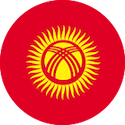Highlights
Here is a quick look at some of the highlights unearthed in the study

#1. Libya
Libya’s energy prices are heavily state-subsidised and the country is entirely self-sufficient when it comes to electricity, as a result of its plentiful oil reserves and growing renewable energy projects.

#2. Angola
With large oil and natural gas supplies, along with huge investment in hydropower, Angola is working towards extending electrification to 60% of the population by 2025. It is the third-largest economy in Sub-Saharan Africa.

#3.Sudan
Sudan relies on hydropower for around 50% of its electricity supply, and is also investing in solar energy. The country’s urban areas enjoy state-subsidised electricity, however up to 50% of the country is yet to be electrified.

#4. Kyrgyzstan
Hydropower is a major source of electricity in Kygyzstan, accounting for over 90% of domestically generated electricity, and is generously state-subsidised. The country also imports electricity from its neighbours.
Our comments